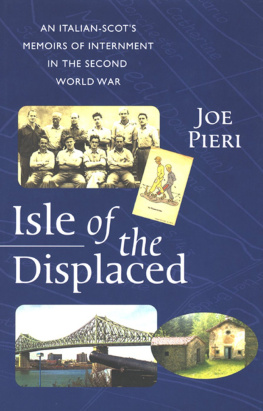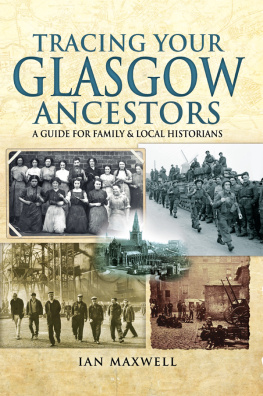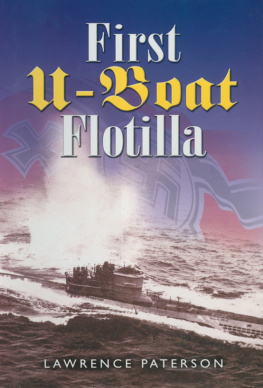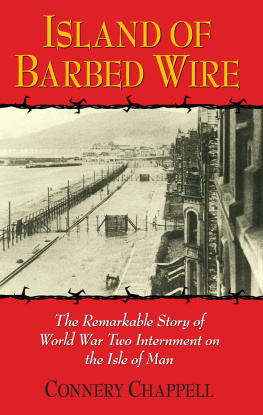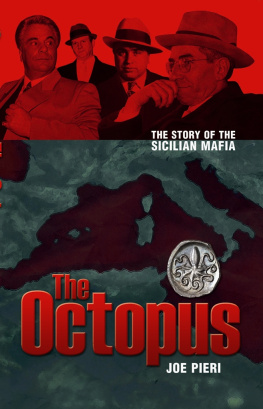Isle of the Displaced
AN ITALIAN-SCOTS MEMOIRS OF INTERNMENT IN THE SECOND WORLD WAR
JOE PIERI
NEIL WILSON PUBLISHING
To Mary Cameron
Acknowledgements
I am indebted to George Martinez of Romsey for encouraging me to write this book.
His recollections of some of the events recounted here have been of great help.
I thank him also for the ground maps of the camp.
The events in this book took place precisely as I remember them. In some instances
I have seen fit to change the names of some persons.
The group photograph on the front jacket shows me seated second from the left, front row. On my right is Giulio Ghiloni from Glasgow and to my left, Mario Casci from Largs. Standing in the back row on the left is Joe Guidi of Glasgow (now dead) who helped me in the tunnel incident (see ) and to his left, Peter Landi from Bournemouth. Fourth from the left is Joe Salotti, from Prestwick.
Contents
Introduction
In the year 1535 the French explorer Jacques Cartier sailed up the St. Lawrence River, landed at a Huron Indian village known as Hochelaga by the natives and gave it the name Mont Real. In 1611 Champlain, the first Governor of French Canada, set up a military post on an island in the middle of the river directly in front of Mont Real which was by now a settlement of some considerable size. He named the island Ile Saint Hlne, after his young bride of that name. Shortly afterwards a fortress was built there and to this day the stark pile of stone and rock still stands. The building is a low edifice of two stories, built of massive stone blocks and encompasses on three sides a narrow courtyard facing out to the river. On the far side lies the main area of Montreal city rising to the imposing heights of Mount Royal beyond.
The island is now a beautifully kept public park much frequented for picnics in the summer by the citizens of Montreal and by tourists who come to enjoy the handsome gardens and the spectacular views of the modern city across the river. The fort serves as a museum. The interior is a series of rather uninteresting military exhibits with pictorial displays portraying the military history of the province of Quebec. These are labelled in English and French. At the end of one of the long and narrow second floor rooms, incongruously set amongst the military exhibits, are three wooden prison cells with iron barred doors. They are small and cramped, measuring some nine by five feet and affixed to one of them is a plaque with an inscription.
During the Second World War this fortress served as a prisoner of war camp for Nazi and Fascist prisoners. These are the punishment cells used for the more dangerous of them.
I spent three years in that camp and 30 days in those cells. This is the story of how I came to be there.
Origins
A few kilometres from the hilltop town of Barga in Tuscany, on the steep wooded slopes above, stand the ruins of a small stone chapel. In front is a paved clearing, and on either side a farmhouse and some small barns. The area is remote, deserted and access is difficult. There is no road, but the climb up from Barga is well worth the effort, for the view from the clearing down into the valley beneath is spectacular. Since the end of the 1939-45 war I have trekked up there many times, although the walk seems to become ever steeper for me as the years go by.
Many years ago a family of crofters eked out a living there. The hamlet went by the name of Bacchionero (Black Wood), and this is where I was born nearly 80 years ago, at the end of the 1914-18 war.
In the second half of the 19th century, newly developing means of transportation by land and sea had helped to give rise to the social and historical phenomenon of mass emigration from Europe to the sparsely populated lands of the Americas. Every European country contributed to the flow of immigrants seeking a better life in the New World, none more so than the emergent nation of Italy.
With hunger, poverty and social injustice at home as the spur, a massive flow of millions of Italians began to make its way to far-off lands offering wealth and opportunity. Until the unification of Italy in 1861 no statistics were available to catalogue such an unprecedented movement of people, but between 1880 and 1890 it is recorded that some five million Italians left their homeland to seek a better life. In the first 20 years of the 20th century a staggering total of ten million souls quit their native Italian regions to settle for the main part in the USA and the countries of South America. My family was one such.
My parents, Francesco and Maria Pieri were a young couple from the Barga area near Lucca. To escape the grinding poverty of their native hills they set off in the early 1900s for the USA and after the shock and bewilderment aroused by the sight of Ellis Island and the teeming tenements of New York, they found that life was good, for if a man had a strong and willing back there was plenty of well-paid work available. A series of jobs in different places followed, with the young couple finally settling in St Paul, Minnesota, where my older brother Ralph was born.
Around 1912, at the time of her North African campaigns and with her manpower depleted by the mass exodus of her young men in previous years, Italy mounted a wide-ranging recruitment campaign among Italians of military age in the USA. Beguiled by glowing promises of a better future, my parents decided to return to Italy and my father served in the campaign in Libya until the outbreak of the 1914-18 war. Then, in 1915, Italy joined Britain and France and declared war on Germany.
My father was lucky to escape the carnage of the battlefields of Caporetto and the Piave. Caporetto had been a particularly bloody but lucky experience for him. Subjected to days of ceaseless and heavy artillery attack, without food and water and outflanked by the rapidly advancing Austrians, the Italian troops began a disorderly retreat down the mountain passes. The officer in command, General Cadorna, stopped the retreat from becoming a disastrous rout by issuing orders that, pour encourager les autres, every tenth man found retreating and without arms would be summarily shot. Francesco was lucky in that he did his numbers and had held on to his rifle. It is interesting to note that a senior officer in the Austrian forces who had tried out this new kind of Blitzkrieg was a certain Major Erwin Rommel, who was to achieve fame in the North African desert 25 years later. For his part in the Caporetto attack Rommel was awarded the Pour Le Mrite (the Blue Max), the highest decoration in the German army of the 1914-18 war.
Francesco returned to his native Tuscany after the armistice in 1918, but disillusionment soon set in. The old ways had not changed, the ossified social structure still held sway, and the abysmal poverty from which Francesco had sought to escape still existed. Nothing had changed, indeed, conditions were worse. There was little work to be had, and the chaotic politics of the day, with bitter quarrels raging between the differing groups of Monarchists, Bolsheviks and the newly-emerged Fascisti led by one Benito Mussolini, held out no hope of material progress. So once more Francescos thoughts turned to the USA, but the way there was now barred. Immediately after the war in 1919, faced with the prospect of a new and unmanageable influx of immigrants from Europe, the United States government had imposed a quota system of immigration which severely limited the entry of Mediterranean peoples. No matter that Francesco had lived and worked in there for a number of years before the war or that Ralph was American by birth; he would have to take his place in the queue, which meant a wait of many, many years.

